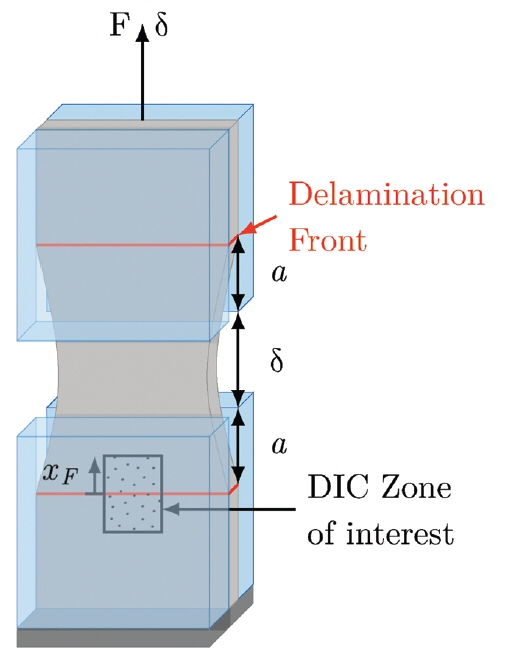P Elzière, C Dalle-Ferrier, C Creton, E Barthel and M Ciccotti, 2017.
Large strain viscoelastic dissipation during interfacial rupture in laminated glass. Soft Matter, 13, 1624-33.

In the dynamic rupture of laminated glass, it is essential to maximize energy dissipation. To investigate the mechanisms of energy dissipation, we have experimentally studied the delamination and stretching of a polymeric viscoelastic interlayer sandwiched between glass plates. We find that there is a velocity and temperature domain in which delamination fronts propagate in a steady state manner. At lower velocities, fronts are unstable, while at higher velocities, the polymer ruptures. Studying the influence of the interlayer thickness, we have shown that the macroscopic work of fracture during the delamination of the interlayer can be divided in two main components : (1) a near crack work of fracture which is related to the interfacial rupture and to the polymer deformation in the crack vicinity. (2) A bulk stretching work, which relates to the stretching of the interlayer behind the delamination front. Digital image correlation measurements showed that the characteristic length scale over which this stretching occurs is of the order of the interlayer thickness. Finally, an estimate of the bulk stretching work was provided, based on a simple uniaxial tensile test.


